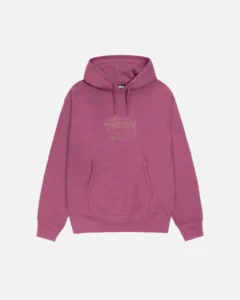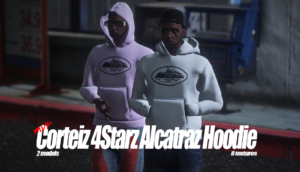In today’s fast-paced digital landscape, brands are constantly seeking innovative ways to capture consumer attention. With the sheer volume of information and advertisements bombarding potential customers, standing out has become a significant challenge. Enter extended reality solutions—an umbrella term that encompasses virtual reality (VR), augmented reality (AR), and mixed reality (MR). These technologies are revolutionizing how brands engage with their audiences, offering immersive experiences that not only capture attention but also foster deeper connections. This article explores how extended reality solutions are helping brands break through the noise and create memorable interactions with consumers.
Understanding Extended Reality
Extended reality refers to a spectrum of immersive technologies that blend the physical and digital worlds.
- Virtual Reality (VR) immerses users in a completely digital environment, often requiring a headset to experience.
- Augmented Reality (AR) overlays digital information onto the real world, enhancing the user’s perception of their environment through devices like smartphones or AR glasses.
- Mixed Reality (MR) combines elements of both VR and AR, allowing users to interact with both real and virtual objects in real-time.
These technologies are not just for gaming or entertainment; they are increasingly being adopted by brands across various industries to enhance customer engagement and drive sales.
The Power of Immersive Experiences
1. Captivating Attention
In a world where consumers are inundated with advertisements, extended reality solutions offer a unique way to capture attention. Traditional marketing methods often struggle to engage audiences effectively, but immersive experiences can create a lasting impression. For instance, a brand might use AR to allow customers to visualize how a piece of furniture would look in their home before making a purchase. This interactive experience not only grabs attention but also encourages consumers to engage with the brand on a deeper level.
2. Enhancing Brand Storytelling
Extended reality services enable brands to tell their stories in innovative ways. Instead of relying solely on static images or videos, brands can create immersive narratives that draw consumers into their world. For example, a travel company might use VR to transport potential customers to a tropical destination, allowing them to experience the sights and sounds of the location firsthand. This kind of storytelling can evoke emotions and create a stronger connection between the brand and the consumer.
3. Personalization and Customization
One of the significant advantages of extended reality solutions is the ability to personalize experiences. Brands can tailor their offerings to meet the specific needs and preferences of individual consumers. For instance, a cosmetics brand might use AR to allow customers to virtually try on different makeup products, helping them find the perfect shade without ever stepping into a store. This level of personalization not only enhances the customer experience but also increases the likelihood of conversion.
4. Building Community and Engagement
Extended reality solutions can foster a sense of community among consumers. Brands can create shared experiences that encourage interaction and collaboration. For example, a gaming company might host a virtual event where players can come together in a VR environment to compete or socialize. These experiences can help build brand loyalty and create a community of engaged customers who feel connected to the brand and each other.
Real-World Examples of Extended Reality in Action
1. IKEA Place
IKEA has embraced augmented reality with its IKEA Place app, which allows customers to visualize how furniture will look in their homes. By using AR technology, users can place 3D models of furniture in their living spaces, helping them make informed purchasing decisions. This innovative approach not only enhances the shopping experience but also reduces the likelihood of returns, benefiting both the customer and the brand.
2. Nike’s Virtual Try-On
Nike has leveraged AR technology to create a virtual try-on feature in its mobile app. Extended reality services can use their smartphones to see how different shoes will look on their feet before making a purchase. This interactive experience not only engages consumers but also helps them feel more confident in their buying decisions, ultimately driving sales.
3. The North Face’s VR Experience
The North Face has utilized virtual reality to create immersive experiences that showcase its products in action. By allowing customers to experience the thrill of climbing a mountain or hiking through a forest in VR, the brand effectively communicates the quality and performance of its outdoor gear. This approach not only captivates consumers but also reinforces the brand’s identity as an adventure-focused company.
The Future of Extended Reality Solutions
As technology continues to advance, the potential for extended reality solutions in marketing and branding is vast. With the rise of 5G networks, the capabilities of AR and VR will expand, allowing for even more immersive and interactive experiences. Brands that embrace these technologies will be well-positioned to stand out in an increasingly crowded marketplace.
1. Integration with Artificial Intelligence
The integration of artificial intelligence (AI) with extended reality solutions will further enhance personalization and engagement. AI can analyze consumer behavior and preferences, allowing brands to create tailored experiences that resonate with individual users. This level of customization will be crucial in capturing attention and driving conversions.
2. Expanding Accessibility
As extended reality technologies become more affordable and accessible, more brands will likely adopt these solutions. The proliferation of AR-enabled smartphones and affordable VR headsets will enable a broader range of consumers to engage with immersive experiences. This democratization of technology will open new avenues for brands to connect with their audiences.
3. Evolving Consumer Expectations
As consumers become more accustomed to immersive experiences, their expectations will evolve. Brands will need to continually innovate and enhance their extended reality offerings to meet these changing demands. Companies that can stay ahead of the curve and deliver engaging, high-quality experiences will thrive in the competitive landscape.
What People Also Ask
What are extended reality solutions?
Extended reality solutions encompass technologies such as virtual reality (VR), augmented reality (AR), and mixed reality (MR) that create immersive experiences by blending the physical and digital worlds.
How do extended reality solutions benefit brands?
Extended reality solutions help brands capture attention, enhance storytelling, personalize experiences, and build community engagement, ultimately leading to stronger connections with consumers.
Can extended reality solutions improve customer experience?
Yes, extended reality solutions can significantly improve customer experience by providing interactive and immersive ways for consumers to engage with products and services, leading to more informed purchasing decisions.
What industries are using extended reality solutions?
Extended reality solutions are being adopted across various industries, including retail, travel, entertainment, education, and healthcare, as brands seek innovative ways to connect with their audiences.
Conclusion
Extended reality solutions are transforming the way brands engage with consumers, offering innovative ways to break through the noise in a crowded marketplace. By leveraging immersive technologies, brands can create captivating experiences that resonate with their audiences, enhance storytelling, and foster deeper connections. As the technology continues to evolve, the potential for extended reality in marketing and branding will only grow, providing exciting opportunities for brands willing to embrace this new frontier. In a world where attention is scarce, extended reality solutions are proving to be a powerful tool for brands looking to stand out and make a lasting impact.




